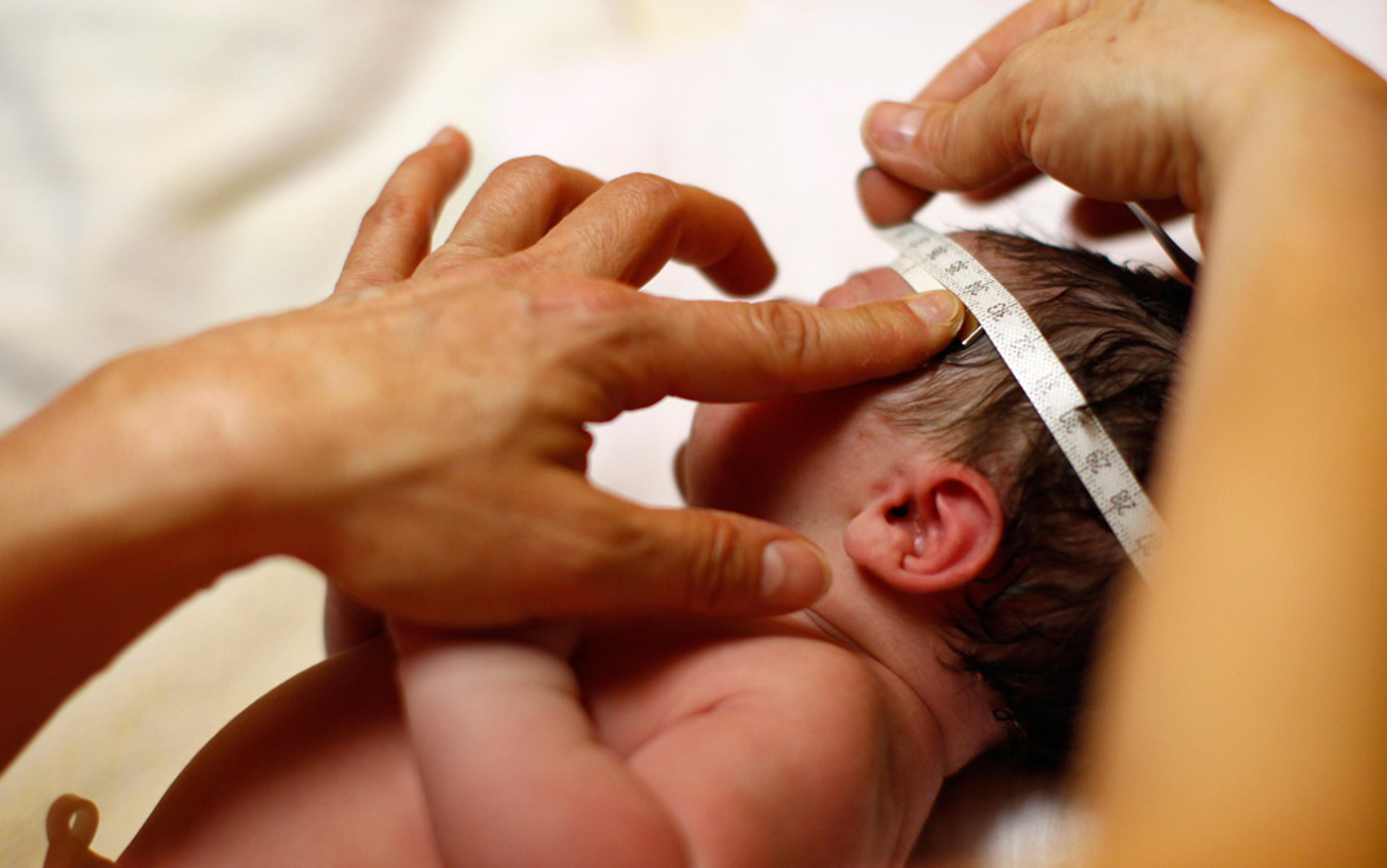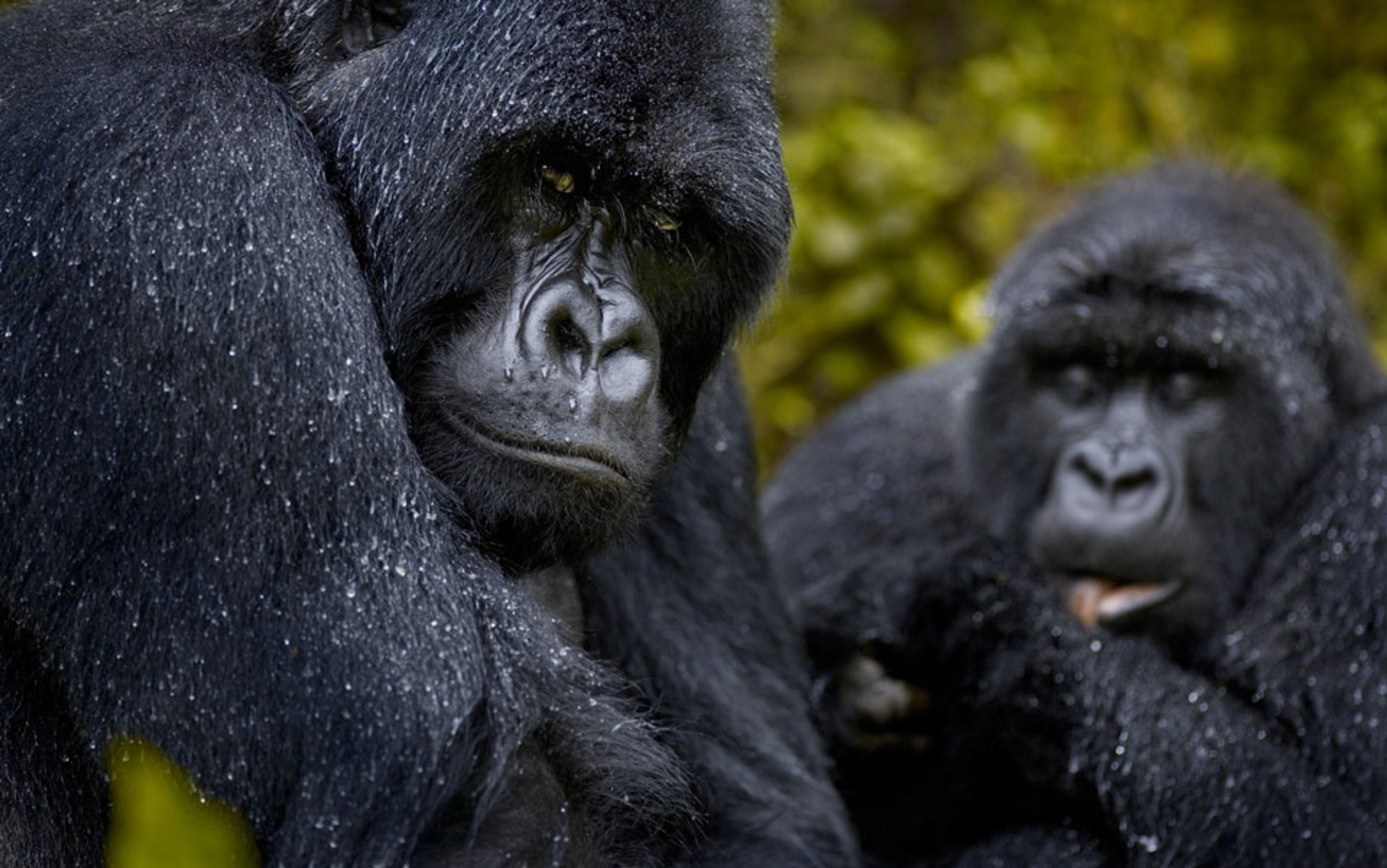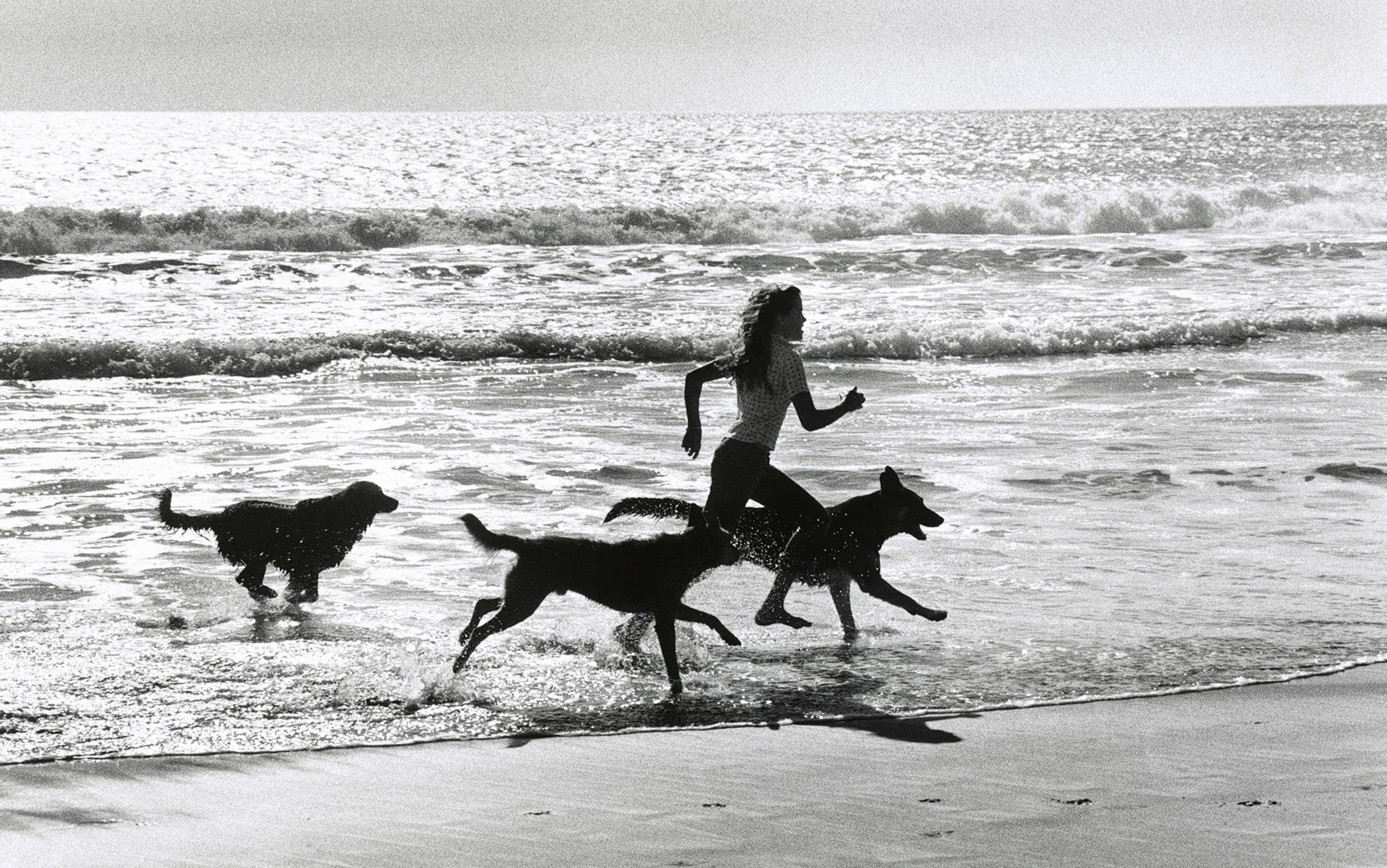Most of the people reading this article do not possess the skill to start a fire from scratch. And yet, many anthropologists think that the mastery of fire literally transformed our ancestors into human beings. They say it gave us cooking, protection and heat, and also reshaped our very anatomy. In Catching Fire (2009), the Harvard anthropologist Richard Wrangham argues that eating cooked food produced the efficient Homo erectus digestive tract, freeing up energy for brain growth.
Be this as it may, our ancestors lived for a long time without fire and we could presumably do it again, however unpleasant that sounds. In fact our ancestors did lose the knack of fire-starting, for generations. Control of fire first appears in South Africa as early as 1.5 million years ago. It crops up again in Israel and China around 700,000 years ago, but doesn’t appear in European populations until 300,000 years later. Why the dark interludes? Perhaps a tribe lost its master fire-starter to a predator before she had a chance to pass on the technique. Perhaps a whole population of fire adepts was wiped out in a single catastrophe. Either scenario could have blacked out whole millennia before the vital techniques were reinvented or re-encountered.
It appears, despite fire’s incredible value for survival, that natural selection has not given human brains any sort of prewired module for controlling it. Such skills belong instead to the realm of culture: not the high culture of libraries and works of art but an older, dumber process of transmission, working person-to-person and generation-to-generation, fragile enough to lose everything in a single tragic decade but sturdy enough to survive for millennia under the right conditions. And it isn’t the only vital skill to hang by so slender a thread.
What about sex? Procreation seems like the last thing that nature would leave to the vagaries of cultural education. Yet it turns out that even chimpanzees — not exactly paragons of studiousness — must be shown how to do it. Young chimps in the wild observe sexual behaviour and then translate that information into successful copulation once past puberty. In captivity, denied the instructive example of adult sex, chimps become aroused but are unable to engage the equipment effectively. My friend Iner Peterson was the architect and physical engineer who constructed the Bioastronautics Research Laboratory at Holloman Air Force Base in New Mexico in the early 1960s. He had the honour of working with Ham, the first chimp that America sent into space. Peterson informs me that when the lab instituted a breeding programme designed to create a pathogen-free chimp, they could not get captive chimps to breed properly. They had to import wild chimps from Gabon to demonstrate. That gives us an idea of how deep the roots of culture can go.
In what follows, I will be using ‘culture’ to refer to all the learnt forces that shape animal communities — forces that are transmissible, like infection or contagion, and not necessarily dependent on the evolution of language. These traditions or folkways are ‘inherited’ in the sense that an individual is born into them, but they’re not innate or genetic. Humans have culture in this sense and so do other primates. Chimpanzees and bonobos learn their unique sexual practices and dominance hierarchies from their peers and elders. Some of their behaviours are common to the entire species, meaning that they are probably under fairly direct genetic control. Other deep patterns appear to be sustained by imitation rather than genes. For example, there are chimp communities that transmit special nut-cracking or termite-fishing techniques to each other, while nearby groups remain ignorant of the same tricks.
Everyone knows that culture is a game-changer. When Homo sapiens finally migrated out of Africa around 50,000 years ago, we hit the ground running, and conquered almost every ecological niche we encountered, filling Europe and Asia in only 5,000 years. Evidently, culture is powerful. We know it can operate much faster than biological evolution. But how does it work? Where does it come from?
The brain-boom model, dominant in the 20th century, held that hominin brain expansion was enough to explain the cognitive and cultural sophistication of humans. That view is being properly complicated by recent considerations of social environment, dietary change, environmental complexity, and so on. But the specific assumption that culture is an effect of brain size (which produces intelligence) has proven to be very stubborn. For example, in Principles of Human Evolution (2004), Robert Andrew Foley and Roger Lewin sum up the received wisdom thus: ‘If one were to ask what the outcome of greater brain size and intelligence in humans was, the most obvious answer is that it provides the basis for culture.’
This is a nice idea, but it’s wrong. Sexual relations between males and females changed sharply during the Pleistocene. So did family structures, dominance hierarchies and even the length of childhood. These developments created the very possibility of our sophisticated modern cultures, but they didn’t come about because big-brained rational agents did utilitarian calculations on the cost-benefit outcomes. It does no good for evolutionary psychologists to assume that intelligence popped up and then quickly restructured the hominin cultural life to create families, co‑operative food storage, spears, religion, art and every other adaptive innovation. Why would intelligence have popped up in the first place? Evolutionary psychologists such as Nicholas Humphrey and Robin Dunbar have put forward a more sophisticated, ‘Machiavellian’ model of human evolution, one that acknowledges the influence of social group size on the development of culture — but even they tend to stress the cognitive jumps brought on by increased social complexity. What then explains this increased social complexity?
We appear to be trapped in an explanatory loop. There is, however, a way to break out of it, and the missing ingredient is emotion. Emotion is what guided us before we had modern minds. Emotion must, in a certain sense, be responsible for the development of those big brains of ours. But the story of human emotional evolution has never been told. The time has come for us to start building a proper research programme.
But what are emotions? Greek philosophers saw them as bodily energies in need of constant reining-in by reason. The Stoics (and Benedict de Spinoza in the 17th century) saw them as forms of flawed judgment. Emotions, for Sigmund Freud, spilt forth from the hydraulics of the unconscious. Now neuroscience is giving us some fine-grained details.
All vertebrates have adaptive instincts such as fight or flight. These are old-brain systems, housed primarily in the brainstem. Built on top of them are the limbic-brain emotional circuits, and emotional neuroscience has located seven major emotional systems that all mammals share. Each of these circuits has a unique pathway through the brain. Each enlists specific neurotransmitters and hormones, and results in specific mammal behaviours. The neurocircuitry for fear, for example, passes from the amygdala through the hypothalamus to the periaqueductal grey matter, down to the brainstem and out through the spinal cord. This system produces freezing behaviour, distress vocalisation (bleating, cries and the like), flight and escape movements, defecation, and defensive thrashing. Natural selection built this operating system in most vertebrates because it helped them to survive in a hostile world.
Just as all vertebrates possess fear, they also universally engage in searching behaviour: hunting, foraging, procreation and so on. The Dutch philosopher Spinoza recognised this fundamental drive in all creatures and called it conatus (striving). Contemporary scientists, using the terminology of the neuroscientist Jaak Panksepp, call it the ‘SEEKING system’, in upper case to signify its simultaneously psychological and neurological nature. SEEKING is often classified with the emotions but it is really a master emotion, a motivational system that organisms enlist in order to find and exploit resources in their environment. In plain English, we call it desire. It is what inspires mammals to pursue pleasures or satisfactions, but it is not the same as pleasure. It is that growing, intense sensation of heightened attention and anticipation — as if you are just about to scratch a powerful itch. Every kind of purposeful mammalian pursuit has its roots in SEEKING.
This desire system, which sparks in the ventral tegmental area of the midbrain, rising through the nucleus accumbens and extending up to the prefrontal cortex and down to the brainstem, is the main dopamine circuit of the brain. It is strongly correlated with pleasure rewards, but it actually spikes highest just before you receive the pleasure. As the neuroscientist Robert Sapolsky puts it in Monkeyluv (2005), ‘dopamine isn’t about reward. It’s about the anticipation’. If you use an electric charge to stimulate the SEEKING system in a mammal’s brain, the animal will be galvanised into pursuing whatever it most needs at that moment — food, water, sex, and so forth. In chimps, bonobos and humans alike, one of the system’s highest priorities is food, and it is instructive to see how this bit of emotional circuitry shapes the dietary habits of our two nearest cousins.
The evolution of the family played a huge role in creating a stable, secure environment for hominin information culture
Chimpanzee hunting turns out to be more common than we previously thought. Chimps eat more than 30 different species of vertebrates, the red colobus monkey being a favourite target. A lone chimp hunting a monkey has only a 30 per cent chance of success but a coalition of 10 or more chimps has a 100 per cent success rate, so the selection pressure for chimps to form social coalitions is obvious. At the same time, males compete for females and for rank, which means that these coalitions tend to be uneasy. In The Bonobo and the Atheist (2013), Frans de Waal points out that human men share this ambivalence with our chimp cousins. We band together in shared seeking projects and close ranks against common enemies, but men also undercut each other in the competition for females. Then, like chimps, we ‘groom’ each other (with language or beer) to smooth over the competition and get back to co-operation.
Bonobos don’t have the same hunger for animal protein as chimps or humans. Their wet rainforest habitats provide them with a plentiful diet of fruit, so the scarcity that encourages social hunting in chimpanzees is relaxed. Bonobos do only a little collective hunting, but they dedicate significant energies to finding fruits and vegetation. And, unlike chimps, bonobos are socially matriarchal.
Now, is their matriarchy cultural or biological? This is a difficult question to answer. With humans, we know that early developmental experiences shape our physiological and neurological defaults. Think of a layer of ‘soft-wired’ traits that overlay our genetic hardwiring. We often forget that our primate cousins have the same soft-wiring, albeit to a lesser degree, and so even ‘deep’ behavioural systems such as matriarchy might therefore be strongly cultural in origin. Captive chimpanzees fail to learn sex because their innate LUST circuits lack dedicated targets and techniques. Similarly, matriarchy in bonobos might well be genetically driven, underwritten by neuro-chemicals such as oxytocin and dopamine, and at the same time bear the imprints of the animal’s early experiences. In other words, while they are certainly not blank slates, primates might turn out to be quite flexible. This raises the prospect of an intriguing experiment: could you raise newborn bonobos en masse to behave more like chimps, and vice versa?
However it arises, bonobo matriarchy manifests itself in many ways, and one of the most interesting has to do with hunting. Chimps, bonobos and humans all benefit when their respective males hunt. Anthropological data on human societies reveals that around 88 per cent of a foraging society’s protein intake is acquired by men. But nutrition is not enough to explain primate hunting. When male chimps catch prey, they become female magnets, so the males tend to use meat to attract mating partners. When male bonobos catch and kill monkeys, the dominant matriarchs simply confiscate the meat. Since it brings them no sexual or political advantage, male bonobos are not very interested in hunting. Thus we see that carnivorous behaviour is not strictly a matter of diet and nutrition. The SEEKING system of both bonobos and chimps is oriented toward hunting, but the scarcity of other dietary resources means that hunting confers a sexual edge for chimps. That bumps it up the SEEKING to-do list.
And what about us? Early human SEEKING was not a different kind of process, but it evolved under very specific conditions. In addition to hunting, foraging and scavenging, our human ancestors acquired a new kind of taste — equally motivated by the SEEKING system, but now with information as its target. Our capacity for desire, originally adapted to help exploit specific resources, joined forces with our primate talent for imitation to create an engine for cultural evolution. Learning how to crack open a nut with a rock is impressive for a chimp, but it’s pathetic compared to flint-knapping stone tools, making clothes, carving spears or processing toxic tubers. Chimpanzee hunting does not require much in the way of cortical sophistication: it is perceptually difficult but very simple at the strategic level. Human hunting, on the other hand, is extremely skill-intensive: it takes around two decades of daily practice for males to become masterful. There is no way our human ancestors could have harvested their complex knowledge and skills without the emotional push-pull of the SEEKING system.
But if chimps and bonobos have the same emotional equipment, why didn’t they also develop a hunger for information? Unimpressed with the big-brain, magic-bullet theory of human success, the Australian philosopher Kim Sterelny has an alternative suggestion. In The Evolved Apprentice (2012), he argues that, following dramatic changes in the social organisation of early humans, a positive feedback loop emerged during the Pleistocene. Firstly, childhood became much longer and safer. This created a vital space in which to learn. Juveniles needed to be sheltered from the pressures of existence while they were acquiring complex survival skills, and they needed a stimulating environment filled with tools and experts to practice on and interact with. Once these conditions were in place, information could flow across the generations at high volume and in high fidelity.
Why did childhood become safer for early humans? This is probably the result of several factors, including the invention of cooking, food storage, and the development of the collective hearth. But one of the most important changes was better reproductive co-operation. Males stopped killing offspring and longer-term parenting partnerships formed. How did they go from baby-killers to bodyguards? We’re not sure, but it seems likely that tubers were important.
Suppose that, like contemporary chimps, and indeed like some contemporary humans, our hominin ancestors practised a form of ‘fission-fusion’ polygyny. This means they were not living like contemporary nuclear families. Mothers and infants would have bonded strongly but adults would have drifted together into subgroups for hunting or sex, separating again almost daily. The size of these groups could have varied (up to 30, perhaps) depending on the available resources. When unattached males entered a new group or found a mother unprotected, they would kill the infant just as chimps often do. This would put the mother back into oestrus and the interloper could impregnate her, hijacking her reproductive system for his own gene line.
It would have made sense for the men to hunt for protein while the women dug nourishment out of the earth. And so new kinds of partnership — proto-marriages — became possible
At some point (we’re not sure when), males and females stumbled upon the new strategy of stable partnerships. We moved from high-density forests to low-density woodlands, and a new sexual division of labour emerged around the food sources of the savannah. Excellent data has been collected showing the importance of tubers to contemporary Tanzanian Hadza peoples and, by extension, our hominin ancestors. Humans in the savannah compete with baboons for berries, small game, baobab and some honey. But baboons can’t get to the deep tubers as well as Hadza women can, so the roots remain an important fallback food for the humans when times are tough. When our early ancestors faced similar conditions, it would have made sense for the men to hunt for protein while the women dug nourishment out of the earth. And so new kinds of partnership — proto-marriages, in effect — became possible.
This would have solved another important problem for our ancestors: paternity. It is much more likely that males will provide for juveniles if they are close relatives, and there are three ways to make reasonably sure of that. Alpha-male gorillas keep harems, intimidating their potential rivals with shows of violence. Tamarin monkeys and humans form pair-bonds in which females guarantee fidelity in exchange for material support. Chimpanzees live in band-of-brothers kin groups, so most of their potential rivals are closely related to them from the beginning. Bonobos have sex with everything in sight, meaning that paternity is obscured (but then, bonobo fathers don’t offer much in the way of child support anyway).
The point of all this is that the evolution of the family played a huge role in creating a stable, secure environment for the birth of hominin information culture. These longer, safer childhoods must have also contributed to the growth of inner-subjective head space — no doubt leading to greater representational sophistication and eventually language. And the striking feature of this new social learning is that it becomes so flexible and open-ended. SEEKING, plus an information-rich safe environment, produces curiosity about all sorts of things, and both the curiosity and the products of skill can co-evolve via natural and cultural selection. Information-rich, safe environments are highly congenial for cognitive expansion. Thus we find that, by looking into the development of emotional modernity, we begin to understand the rise of human intelligence too.
If extended childhoods helped to direct the SEEKING system into a social learning feedback loop, another emotional system was reinforcing the social structures upon which this virtuous cycle depended. Meet CARE.
Mother-baby bonding is a useful skill for any animal born into a hostile environment and, in species where the young are particularly vulnerable, nature has not left this relationship up to chance. Unlike other vertebrates, mammals care extensively for their young and other kin. There are important attachment mechanisms in the brain that all mammals share. Specific neuropeptides (oxytocin, prolactin and opiates such as endorphins) all shoot up in the last days of a mother’s pregnancy. Oxytocin, sometimes referred to as the ‘love hormone’, regulates several aspects of maternal biology, facilitating labour and breastfeeding. It also stimulates nurturing: give a non-pregnant female mammal a high dose of these neuropeptides and she will commence mothering behaviours. Studies have also shown that, while oxytocin is necessary to start maternal behaviours, it isn’t required to sustain them. The hormone flips the switch, then mothering CARE runs on its own momentum.
But bonding is a time-sensitive process. Sheep have a very short window for the mother to bond with offspring — only an hour or two. If a lamb is removed from its mother for two hours, the mother will not be bonded and will subsequently reject the lamb. The astonishing thing is that scientists can reopen the bonding window once it has closed simply by injecting oxytocin into the mother’s brain. Once this hormone is flooding the system again, the mother can lock onto her offspring and engage in maternal behaviours.
The unique human childhood is the result of a remarkable chain of events
In chimpanzees, this CARE system is very limited in scope. Mothers and babies bond strongly for approximately seven years, but that’s as far as the sense of family extends. As the biologist Sarah Blaffer Hrdy points out: ‘In roughly half the 300-odd species of living primates, including all four great apes and many of the best-known species of Old World monkeys, such as rhesus macaques and savannah baboons, mothers alone care for their infants.’ In her book Mothers and Others (2009), Hrdy argues that human co-operation was facilitated by unique shifts in child rearing. Unlike chimps, Homo erectus children were raised and provisioned by additional caregivers besides just mom. Grandmothers, aunts, uncles, siblings and fathers (collectively called alloparents) all contributed to child rearing, constituting an expanded circle of empathetic filial feelings.
Human offspring need extra work — a whole team of caregivers — because they’re so helpless for so long. The unique human childhood is the result of a remarkable chain of events. Our Australopithicine ancestors had short childhoods and short lifespans. They also had wide hips, which meant their fetal brains probably developed more in the womb, like chimps, and their behaviour was more genetically hard-wired. By the time of our bipedal ancestor Homo ergaster, the human pelvis could no longer accommodate a well-developed infant’s skull. From this point onward, human infants have been born at a very early stage of brain development relative to other primates. The result is a much larger window of infant dependency that requires staggering amounts of parental and alloparental care.
It also means, because of neuroplasticity, that our brains are literally still wiring as we take in information from our environment — including the rich social environment. Our brains are slowly soft-wiring during our infancy, and our interaction with alloparents creates wider circles of affective bonding. Humans bond with several caregivers and are able to keep bonding indefinitely, even after we become independent.
This emotion-based flexibility of attachment (underwritten by oxytocin swells) gives humans unique powers of co-operation. And it was these emotional developments that must have glued the early families together, incidentally creating the kind of stable environment that enhanced social learning. We know that Neanderthals cared for extended kin because evidence shows that they supported sick and elderly members when they became dependent. Once CARE is filtered through the cultural innovations of reproductive co-operation, alloparenting, social learning and so on, we move beyond narrow dedicated bonding to open-ended flexible bonding. For modern humans, the scope of attachment opens out to the nuclear family and then the extended kin. Eventually, it extends even to fictive kin — non-blood attachments — via religious and ethnic mechanisms of solidarity. And so the space in which culture can develop also grows.
Compared with chimps, humans appear to have expanded the function of their CARE systems considerably. Could our peaceloving cousins the bonobos have similarly adapted their oxytocin systems to go beyond mere maternal bonding? Bonobos and chimpanzees are both members of the genus Pan, the two lineages probably splitting around 1 million years ago. Bonobos, which were not discovered until 1929, are smaller than chimps. Their males and females differ physically less than chimps of opposite sexes do, and male bonobos display less aggression than male chimpanzees. Bonobos live in a diet-rich environment and engage in almost constant sexual activity. Males copulate with females, but males also engage in genital manipulations, or ‘penis fencing’, with one another, and females employ genital-to-genital rubbing techniques. In short, everyone shags everyone else.
Bonobo sex is not just fun and games. The sexual activity intensifies whenever potential conflicts arise, for instance around food sharing. In the same scenarios where chimps and humans fight and display aggression, bonobos will mount each other and restore the peace with doses of sexual ecstasy. As de Waal has noted, bonobos are the hippies of the primate kingdom.
When there is competition for sex and resources, the primate LUST circuit produces chimp-like social forms. The major contributing factor to these structures is simply access to resources. If food is scarce, then males compete for females and LUST is channelled into a hierarchical social system. If resources are as plentiful as they are for bonobos, competition declines, the sexes become harder to tell apart, and LUST can support sexual egalitarianism. Since female bonobos are sexually receptive to all, their males do not compete as chimps do, but neither do they bond like chimps.
Affection, not cost-benefit computation, is the true wellspring of primate social life
Free love and bohemian philosophies have long held out the hope for human sexual liberation. We might have decoupled sex from procreation, but we look like amateurs next to the bonobos. Their LUST circuit has been untethered from one or even a few mates, expanding into all manner of social grooming. What, though, has become of the CARE system in the bonobo? In LUST, norepinephrine and dopamine increases, serotonin drops, and androgens such as testosterone fuel both male and female sexual drive. This is a different circuit to CARE. Is the bonobo practice of sexual pacification a product of the LUST system, the oxytocin-based CARE system, or both?
Chimps are fairly xenophobic, frequently killing newcomers to a group. Humans and bonobos are much more tolerant of, and co-operative with, strangers. Bonobos will quickly engage in sexual activity with members of another group, but they seem to be using sex to cut off aggression, and this is not the same as bonding or attachment. In fact, the combination of promiscuity, ready resources, and down-tuned competition appears to have made bonobo social ties quite weak — they seem to have shallower alliances than either chimps or humans. Ultimately, this is an empirical question, one that might be solved by testing the neuroendocrinology of the primates during such behaviours.
Modern human culture developed because of the specific ways in which our hard-wired, primate emotional systems interacted with the peculiarities of our ancestral environment. Where these interactions produced viable, sustainable populations, we might say that they exhibited ‘social intelligence’ — but this just means that they worked well, that they solved survival problems for the group. Such successes are not dependent on a cognitive theory of the primate minds, any more than the simple but effective team-hunting techniques of chimpanzees depend on genuine rational cognition. Nevertheless, such social and cultural adaptations created the conditions for our intellectual and emotional modernity.
We have filtered two primary emotional systems — SEEKING and CARE — through three different primate social systems to see the resulting forms of social intelligence. Of course, this is a conceptual exercise and evolution doesn’t carve things into neat causal chains. Nevertheless, we can draw some provisional conclusions.
First, I hope I’ve shown that sophisticated and stable patterns of social intelligence are present in chimps, bonobos and humans. Secondly, I’ve argued that emotions are enough to explain layers of social complexity, without any need to invoke advanced rational cognition. Standard-issue primate emotions are channelled through the hard-wired behaviours and cultural folkways of each species, which are in turn created in the matrix of ecology, technology, and reproductive strategy. Modest mental powers such as memory and trial-and-error learning are the only prerequisites for chimps, bonobos, and early humans to have serviceable cultures. It wasn’t until much later that Homo sapiens developed propositional problem-solving, so we shouldn’t project that skill back into deep time. Neither should we anthropomorphise — or ratio-morphise — current apes. The theory of emotions shows how pleasures, pains, anticipations, lust, care, and other gut-feelings can interact in complex social ecologies to produce sophisticated social behaviour.
Eventually, humans devised representational ways to communicate and improve the norms of our social contract. But, before rules, morals, and laws, we had prosocial affective systems — kin loyalty, empathy and so on — that served to bond small groups together. Even our basic folk-taxonomy of the world into friends and foes requires that perceptions and memories be emotionally coded with feelings of approach or avoid. As Kim Sterelny puts it in The Evolved Apprentice (2012): ‘Prosocial and commitment emotions evolved before moral cognition; they made possible the co-operation and cultural learning that prepared the evolution of explicit normative thought.’
The cognitive psychologist Elizabeth Spelke, who runs Harvard’s famous ‘baby lab’, has interpreted the problem-solving skills of prelinguistic human babies as evidence for inborn core knowledge — innate modules of cognition. And the psychologists Karen Wynn and Paul Bloom at Yale have interpreted babies’ early social preference for co-operative companions as cognitively smart — the product of early conceptual thought. I have been suggesting an alternative, emotions-based model for things such as social preferences. Affection, not cost-benefit computation, is the true wellspring of primate social life.
In The Descent of Man (1871), Charles Darwin illustrates the sophistication of animal social emotions by describing a baboon who courageously braved attacking dogs in order to save another juvenile baboon. Darwin tells this and similar stories to suggest that human moral sentiments have their roots in the impressive social instincts of mammals. Darwin’s cousin, Hensleigh Wedgwood, wrote to him to suggest that he had missed the key feature of the story. Not only had the baboon shown something like courage, but other baboons in the vicinity would have recognised the same tug-of-war between sentiments in themselves — fear of the dog conflicting with an impulse to help a vulnerable comrade. Witnessing the heroism would have elicited positive affection toward the helper, and this would translate into greater affiliative behaviours later. The hero baboon, in other words, is someone other baboons want to be close to, and Wedgwood argues that this spectator effect explains the rise of shame and admiration. The agent himself enjoys and internalises this effect, and experiences attraction and repulsion toward his own actions accordingly.
The capacity to learn helps social animals to transform primary emotions into more sophisticated patterns, such as seeking the approval and avoiding the disapproval of peers and superiors. This is true for primates, dogs, and many other mammals. We have an emotional feedback loop that reinforces pro-social behaviour and punishes antisocial behaviour. Contrary to the cognitivists, however, we appear to do this through flexible emotional mechanisms rather than calculating intellect.
Darwin responded politely to his cousin in a follow-up letter, acknowledging that a spectator effect might reinforce and shape sentiments into moral shame and approbation, but that it wouldn’t work at all if primates weren’t already equipped with a ‘blind’ impulse to help each other. That impulse needs to be flexible enough to learn, take direction, and adapt.
Darwin’s heroic baboon reappears and figures prominently in the closing lines of The Descent of Man. For the smug elites who feel worlds above our animal brethren, Darwin reminds them of the depths of human cruelty and brutality. ‘For my own part I would as soon be descended… from that old baboon, who descending from the mountains, carried away in triumph his young comrade from a crowd of astonished dogs.’ Other primates might not have laws, iPhones, and opera, but their emotional cultures could be far richer than we imagined.






